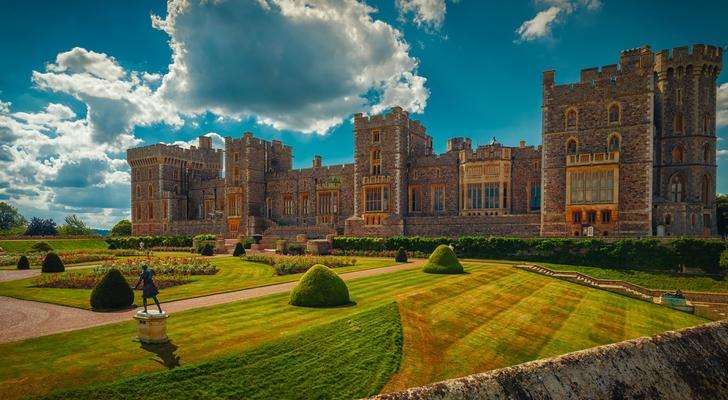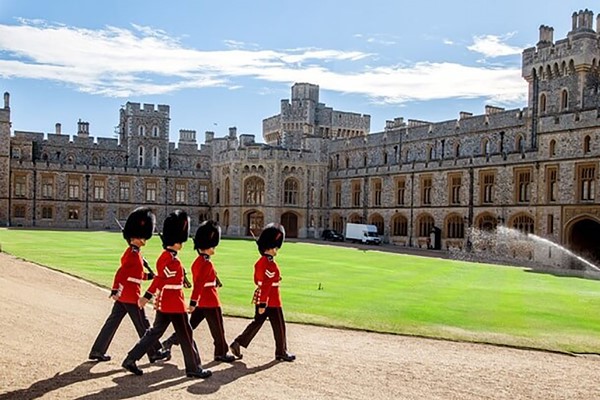Created by King George IV in the 1820s as a space to receive his official guests, Windsor Castle’s Inner Hall has long been closed to the public and fell into disuse when Queen Victoria had it shuttered in 1866. Having used the hall herself for nearly 30 years, she ordered architect Anthony Salvin to close it off and construct a new, smaller State Entrance hall, which runs east to west. Even the direction of the palace’s Grand Staircase was reversed so that it could be accessed from the new State Entrance hall.

The once-grand Inner Hall was thereafter used as a mere storeroom, although part of the space had also been occupied as a temporary display area in 1965.
Situated in an part of the castle that dates back to the mid-14th century, when Edward III transformed Windsor from a military fortification into a Gothic palace, the newly re-opened Inner Hall restores the sequence of spaces leading from the North Terrace visitor entrance through to the State Entrance on the southern side, and re-establishes an uninterrupted view across the Castle’s ground floor.
The Inner Hall’s re-opening, along with the full restoration of its original architecture and interior detail, was conducted as part of the ‘Future Programme’—a series of projects funded by the Royal Collection Trust aimed at enhancing visitors’ Windsor Castle experience.
Restoration workers carefully removed layers of old paint to uncover the intricate design of the ceiling bosses.
These had been created by the Regency period’s most fashionable stuccoist, Francis Bernasconi, who worked at Windsor during the reigns of both George III and, later, George IV.
Adjacent to the Inner Hall, tourists will note a new display of architectural fragments, which were discovered by the architect Jeffry Wyatville while he performed renovations at Windsor in the 1820s. The stone pieces are believed to be remnants of edifices constructed around the year 1110 by Henry I, who first established the Castle as a royal residence.
Upon crossing the Inner Hall, visitors will follow a newly-devised route to see the State Apartments and Semi-State Rooms, Queen Mary’s Dolls’ House and the State Entrance hall—another new addition to the tour route. For the very first time, allow the public to view the special space where Her Majesty The Queen welcomes guests to Windsor. From there, they can soak in spectacular views of the two-and-a-half-mile Long Walk, created by Charles II in the 1680s. Another new element along the visitor route is a display that details the Castle’s 1,000-year history.
The Royal Collection Trust also plans on opening a dedicated Learning Centre next year, as well as installing Windsor’s first permanent café in the Castle’s medieval Undercroft.







